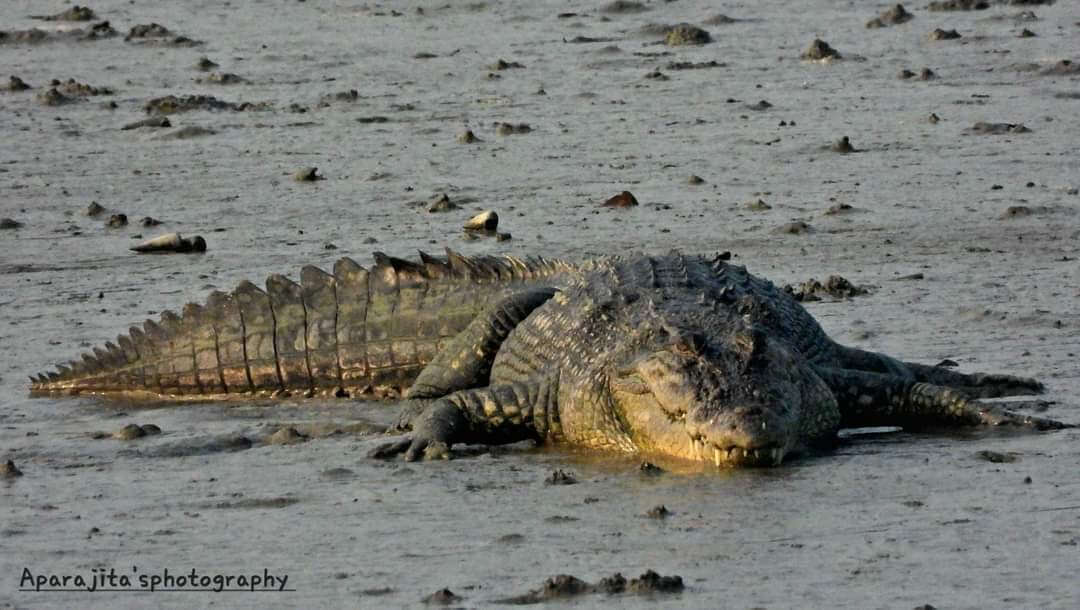The Sundarbans are home to two kinds of crocodiles: the Saltwater crocodile and the Mugger crocodile, which are an important part of the ecosystem, according to Prof. Aparajita, exclusively for Different Truths.

This is about a short trip to the Sundarbans that I made with a group of wildlife-crazy, like-minded people towards the beginning of the year. We were on the second day of our trip when we spotted a crocodile sunning itself on the banks of the wide river we were travelling through in our boat. It lay there, insipid in the bright, wintry sunshine, a full 12 or 14 feet of brute force. The next day, again, we spotted another of these beasts. But this time we had a little bit of trouble spotting it, right? away when our guide told us there was a crocodile on the left bank. It took us a while to realize that a crocodile was lying quietly camouflaged amidst the tangled roots and branches of the mangrove.
Crocodiles often lie basking in the sun, as they are cold-blooded creatures and need to lie quietly on the banks and mudflats and soak in the sun from time to time to keep the temperature of their bodies up.
The Sundarbans are home to two kinds of crocodiles: the Saltwater crocodile… and the Mugger crocodile…
The Sundarbans are home to two kinds of crocodiles: the saltwater crocodile, or Crocodylus Porosus, and the mugger crocodile, or Crocodylus Palustris. The saltwater crocodile is the bigger of the two species and can grow up to almost 20 feet from tip to tail. A full-grown crocodile can weigh over 1,000 kg. Though called saltwater crocodiles, these creatures can inhabit freshwater and brackish water too. Though they are often seen lying on the mudflat quietly and seemingly in insipid stupor, these crocodiles can be aggressive if in an attacking mood.
These see underwater, which helps them prey on fish, crabs, and other creatures under the water with adept alacrity. But having said that, these crocodiles hunt bigger animals like buffaloes, wild boars, Rhesus Macaques, and deer on land as well. Exceptional night vision aids in its nocturnal hunting escapades too.
As for the mugger crocodile, it is normally smaller than the saltwater species and normally grows up to 10–13 feet in length. They are lighter than saltwater crocodiles too, as these weigh around 150–200 kg. These live in freshwater areas like ponds, lakes, and rivers. But these crocodiles too, like their larger counterparts, can turn aggressive if need be and are formidable hunter-predators.
The predatory nature of the crocodiles is part of nature’s way of maintaining balance in the ecosystem of a place.
These Sundarbans crocodiles are listed as vulnerable species…
The good news is that all these crocodiles—be these the big Saltwater ones or the smaller Muggers—are protected by Indian law. These Sundarbans crocodiles are listed as vulnerable species by the International Union for Conservation of Nature (IUCN), thereby drawing general attention to the fact that these dangerous but spectacular creatures are an important part of the ecosystem that we need to safeguard.
Photo by the author






 By
By
 By
By
 By
By